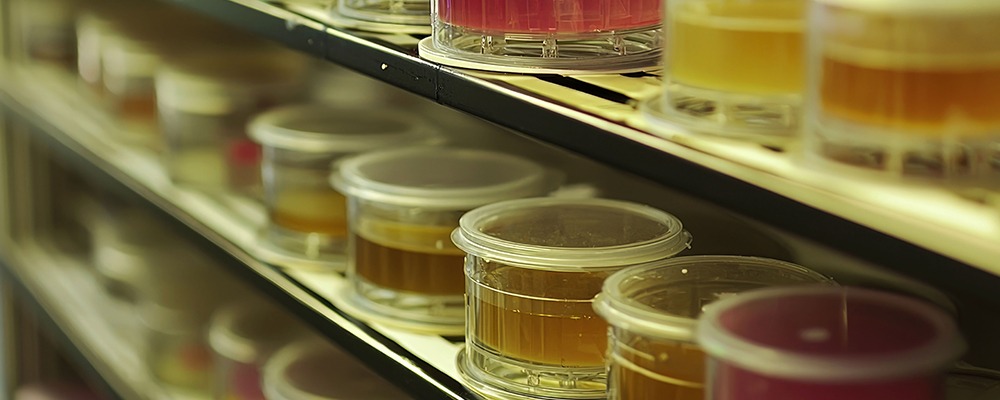Enzymes play a crucial role in various industries, from food processing and pharmaceuticals to textiles and cosmetics. Among the most widely used proteolytic enzymes are papain and bromelain, which are derived from natural sources—papaya and pineapple, respectively. These enzymes are valued for their ability to break down proteins, making them essential in applications such as meat tenderisation, wound healing, digestion aids, and even skincare formulations.
However, the efficacy of these enzymes largely depends on their stability and proper storage. If not handled correctly, papain and bromelain can lose their activity, rendering them ineffective. This blog explores the best practices for ensuring the stability and longevity of these valuable enzymes, covering factors such as temperature control, moisture prevention, pH considerations, and packaging techniques.
Understanding Enzyme Stability
Enzyme stability refers to an enzyme’s ability to retain its structure and function under varying environmental conditions. Factors such as temperature, pH, humidity, and exposure to contaminants can all affect enzyme stability. Papain and bromelain, like all enzymes, are sensitive biological molecules that can degrade if not stored correctly.
There are two main types of stability to consider:
- Thermal Stability – The ability of an enzyme to withstand temperature fluctuations without losing its activity.
- Shelf Stability – The duration for which an enzyme retains its functionality under storage conditions.
For industries relying on papain and bromelain, maintaining enzyme stability is key to ensuring product effectiveness, minimising waste, and reducing costs. Let’s delve into the best practices for preserving these enzymes under optimal conditions.
Best Practices for Storing Papain and Bromelain

- Temperature Control: Keeping It Cool but Not Frozen
Temperature is one of the most critical factors affecting enzyme stability. Papain and bromelain are best stored at temperatures between 4°C and 10°C in a dry environment.
- At room temperature (~25°C), enzyme activity can decline over time, especially in humid conditions.
- At higher temperatures (above 40°C), enzymatic degradation accelerates, leading to loss of potency.
- Freezing is generally not recommended, as ice crystal formation can damage enzyme structures. However, freeze-dried (lyophilised) enzyme powders can be stored at very low temperatures (-20°C) for long-term stability.
For industrial-scale storage, refrigeration units with stable, low-temperature settings should be used. For smaller-scale or laboratory use, storing enzymes in a refrigerator away from light and heat sources is sufficient.
- Moisture Control: Preventing Enzyme Deactivation
Moisture is a significant threat to enzyme stability. When exposed to humidity, papain and bromelain can absorb water, leading to premature activation or degradation. To prevent this:
- Use airtight containers to store enzyme powders.
- Silica gel or desiccant packs should be included in storage containers to absorb excess moisture.
- Avoid opening enzyme containers frequently, as repeated exposure to humid air can compromise stability.
- Store enzymes in low-humidity environments to prevent moisture absorption.
For liquid enzyme formulations, ensuring the solution is properly buffered and stabilised can help prevent degradation due to water content.
- pH Considerations: Maintaining Optimal Activity
Both papain and bromelain have optimal pH ranges where they exhibit maximum activity:
- Papain works best at a pH of 6.0 to 7.0 but remains active in a broader range of 3.0 to 10.0.
- Bromelain functions optimally at a pH of 5.5 to 7.5, with stability in the range of 3.0 to 9.0.
To prevent enzymatic degradation:
- Store enzymes in solutions that maintain a neutral to slightly acidic pH.
- Avoid prolonged exposure to highly acidic (<3.0) or alkaline (>10.0) environments, as these can denature the enzymes.
- If preparing enzyme solutions, use buffered solutions to maintain pH stability over time.
- Protection from Light and Oxygen
Enzymes, particularly those derived from natural sources like papain and bromelain, can degrade when exposed to light and oxygen. To prevent this:
- Store enzymes in dark, opaque, or amber-coloured containers to protect them from UV light.
- Minimise exposure to air and oxygen by keeping enzyme containers tightly sealed.
- If working with liquid enzyme solutions, consider using nitrogen flushing to remove oxygen from storage containers.
For industrial applications, vacuum-sealed or nitrogen-purged packaging can significantly extend enzyme shelf life.

- Proper Packaging: Enhancing Stability
Packaging plays a vital role in enzyme stability. To ensure optimal preservation:
- Use vacuum-sealed or nitrogen-flushed packaging for bulk storage.
- Store in multi-layered, moisture-proof bags to prevent humidity infiltration.
- For transport, maintain temperature-controlled conditions to prevent exposure to heat and moisture.
In commercial settings, enzymes are often stored in aluminium foil pouches, polyethylene-lined containers, or sealed glass vials for long-term stability.
- Handling Enzymes with Care
Improper handling can lead to enzyme loss or contamination. To maintain enzyme stability:
- Use clean, dry tools when measuring enzyme powders.
- Avoid cross-contamination by dedicating specific tools for enzyme handling.
- Do not shake enzyme containers vigorously, as this can introduce moisture or oxygen.
- Label enzyme storage containers with manufacturing dates and expiry information to ensure timely usage.
By following these best practices, industries relying on papain and bromelain can ensure maximum efficacy, prolong enzyme shelf life, and reduce unnecessary waste.
Conclusion
Ensuring the stability and proper storage of enzymes like papain and bromelain is crucial for maintaining their effectiveness in industrial applications. By controlling temperature, moisture, pH, and packaging conditions, businesses can enhance enzyme longevity and performance, reducing product loss and ensuring consistent results. Whether used in pharmaceuticals, food processing, or cosmetics, these enzymes require meticulous handling to preserve their proteolytic activity.
At Biolaxi Enzymes Pvt Ltd, we are committed to providing high-quality enzyme formulations that meet rigorous stability and storage standards. Our expertise in enzyme technology ensures that papain and bromelain retain their potency, delivering superior performance across various industries. By adhering to best storage practices, businesses can maximise enzyme efficiency and achieve optimal results with our scientifically engineered enzyme solutions.




